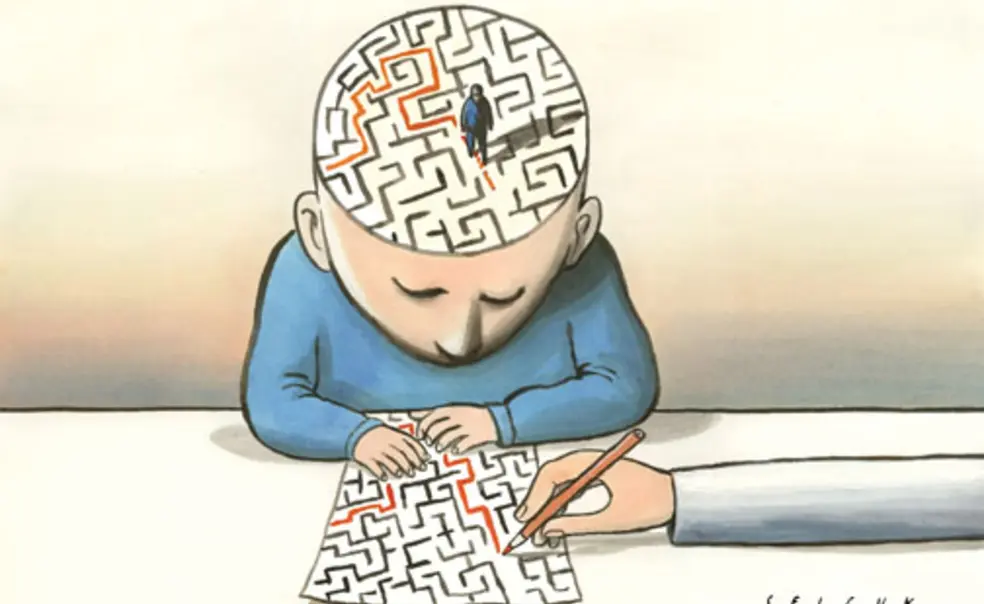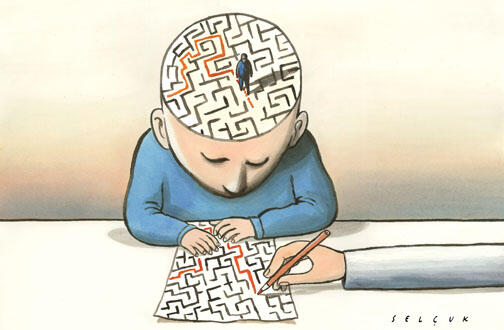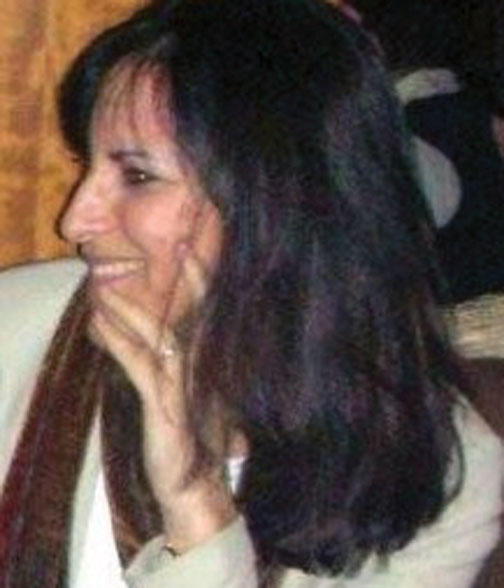Julie List ’78 is the director of the Harry Blumenfeld Pelham Counseling Center of JBFCS, the Jewish Board of Family and Children’s Services in New York City. A longer version of this essay appeared in the Fall 2010 issue of Mental Health News.
Each day I take a journey to the northern tip of New York City, to the Northeast Bronx, where I am the director of an outpatient mental-health clinic. I am a visitor from another country, Manhattan, and I see this world through the eyes of a white, middle-class outsider. As the No. 5 train snakes along the track at East 180th Street, I can see the last hint of the spires of Manhattan. The Empire State Building, a beacon of wealth, points up, seemingly a million miles away.
It’s spring in one of the nation’s poorest counties, and the yellow forsythia is the only spot of color. The elevated subway train makes harsh atonal music amid the groaning of sirens and the urgent horn-blaring of fire trucks. The poverty is evident in the grayness of the faces, the canes and walkers and wheelchairs, the expanding thighs and hips of the many people eating McDonald’s on the run, sipping huge Cokes. Many of the residents are immigrants from Albania; the men have no work, and they sit in a bar and peer cautiously out at this American land of no opportunity. Others are Dominicans, Puerto Ricans, African-Americans, Caribbean-Americans, along with some whites.
The Bronx is the borough New York left behind. Local physicians report that patients in the Bronx are the unhealthiest they ever have treated. There is an increase in type 2 diabetes, and children make up half of the new cases. Bronx County has the third-highest rate of asthma in the state. The official unemployment rate in the North Bronx is about 14 percent; in the South Bronx, nearly 20 percent — compared to the national rate of nearly 10 percent. Actual unemployment — including those who work only part time or have stopped looking for jobs — may be twice that. Almost four in 10 students drop out of school. At 3 p.m., boys who have attended school strut down the street from Columbus High to the Dominican bodega, boxers billowing.
We are an outpatient mental-health clinic run by JBFCS (Jewish Board of Family and Children’s Services), a citywide social-services agency. At my clinic we have 750 outpatients; about half are kids under 18. Our referrals come from neigh boring schools, hospitals, and physicians treating patients who suffer from not only obesity, asthma, and diabetes, but also depression, anxiety, and post-traumatic stress disorder. The children come to us via the psychiatric emergency room, sent there by principals who fear the thrown chair, the threat to shoot somebody dead or to jump out of a window.
We are the DMZ for this part of the Bronx, where we primarily serve the working poor. I make sure our waiting room is filled with donated books. Our patients read, hungrily gobbling up books and magazines. One-third of our staff are people of color, of different ethnicities. Eighty-five percent of our clients are black or Latino.
The problems our clients bring us cross color and class lines, and the pain they suffer is magnified by the economic and racial disparities and indignities they experience. The rage or depression they live with can explode at a moment’s notice. There is no slow burn, no long fuse. A breakup, a verbal taunt, a slap in the face can provoke self-inflicted cuts on the inside of the wrist, the ingestion of a bottle’s worth of Tylenol, the wielding of a knife in self-defense. Or all three. One day I looked out my office window and saw an old-fashioned rumble — shirtless Albanian teens with bats and chains, challenging the black and Latino kids who previously owned our corner.
Most of our female clients were sexually abused as children, and they are haunted by trauma. Many of the children have witnessed their parents hit each other. Some have been removed from their homes and sent to foster care because a parent, or both parents, forgot to take them to school or were using drugs — or because their own untreated traumatic histories have wounded them so deeply they can’t find the resources to parent.
Each client has a history, a family tree, perhaps a newborn baby, and dreams to aspire to. We see them every week, and listen to the hardships they encounter, and the efforts they make to provide good lives for their children. With therapy, some times with medication, and often in groups, we try to help them overcome the obstacles ahead and to give them hope:
With one small child at home, and seven months pregnant with her second, Josie tried to kill herself at 22 by jumping onto the subway tracks as the train approached. She had just discovered that the father of her unborn baby had conceived another baby at the same time. Josie lost her leg up to the knee and part of her hand, but she survived, as did the baby. She came to her first session in a wheelchair with her mother, and she was not happy about being alive.
Maria had twin teenage sons and a younger son. Two years ago, one of her twins was found hanging in the shower after he was kicked out of school for a minor violation of the rules. The family was referred to us one week after the suicide, and Maria was paralyzed with grief and guilt. Now the boys are finally coming up for air, having lived with the empty bed at home every day. Their mother recently gave birth to a baby girl. The mom’s therapist gave a baby shower with members of Maria’s therapy group, with pink decorations on the office walls.
Latasha is bipolar, as are her two teenage daughters. The elder daughter stabbed her father. The family was separated, and the father had to leave the home. Mother and daughters moved from shelter to shelter, and all three stopped taking their medications. Latasha was unable to function and risked psychiatric re-hospitalization. Once stabilized on her medicines, Latasha began the process of putting her family back together.
Sixteen-year-old Thomas had vivid fantasies of hurting students in his high school. He had been fascinated by the murderous events at Columbine and Virginia Tech. A psychiatric evaluation revealed that Thomas had very low self-esteem. Since starting therapy, his fantasies have lessened.
Our patients’ lives are so difficult not only because of their personal histories, but because of the poverty they live in, the racism they encounter, the language barrier faced by many, and the lack of steady work or affordable health insurance. As a result of these disparities, a critical mass of our patients live in constant crisis, and have experienced a series of complex traumas.
So many questions arise when working among the poor and marginalized. I worry a great deal about the children. How can so many young African-American and Latino boys have “attention-deficit disorder”? Is it because a label and medication are easy to dispense, or because they no longer have recess at school and the boys are bouncing off the walls? If children have been physically or sexually abused, how can they sit still and learn geometry? We also acknowledge the strengths our clients show in the face of terrible odds: They start at a disadvantage and never quite catch up.
Since I get to leave the environment at the end of each day, I haven’t become numb to the stories I hear. I never will be inured to the heartbreaking tales of human betrayal, as male family members and strangers alike steal the innocence from young girls, imbuing them with fear and twisted notions of sexual development. My staff members, who hear such stories in greater detail, do tend to get numb, and my job is to try to prevent the vicarious traumatization to which they are vulnerable. They need a place to debrief, to cry if necessary, to take a long, steady exhale between the stories of grievous loss and destruction of the spirit. It is these encounters with the cruelty of human nature that can dehumanize us, and we have to keep believing that there is goodness left in resilience and in the struggle itself. Sometimes, some days, it simply takes your breath away; all of it.
Editor’s note: Clients’ real names are not used in this essay.














No responses yet